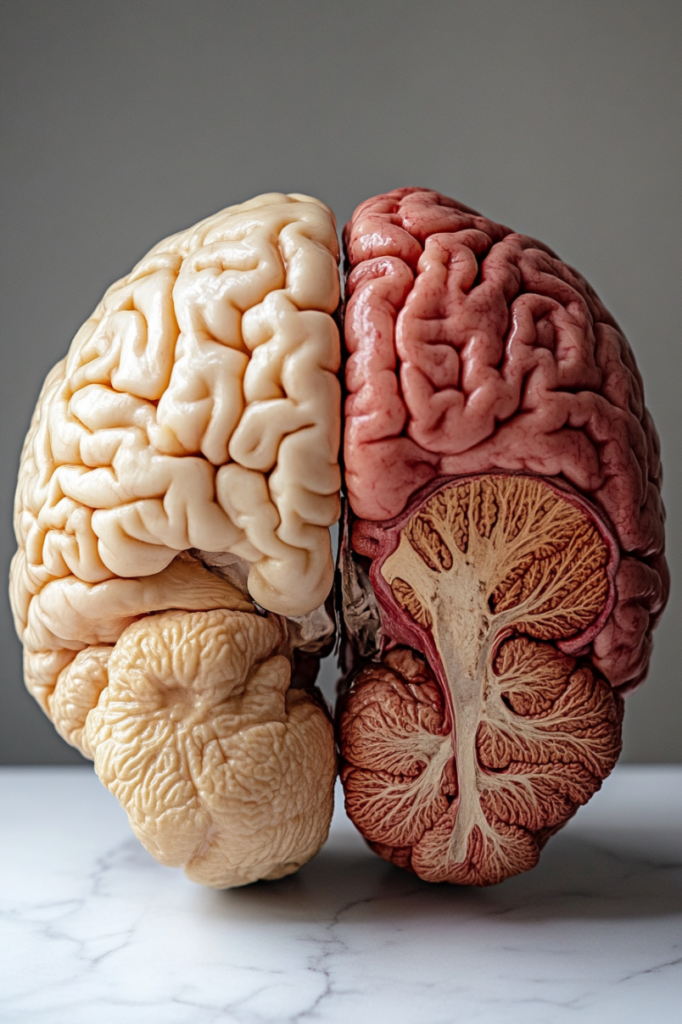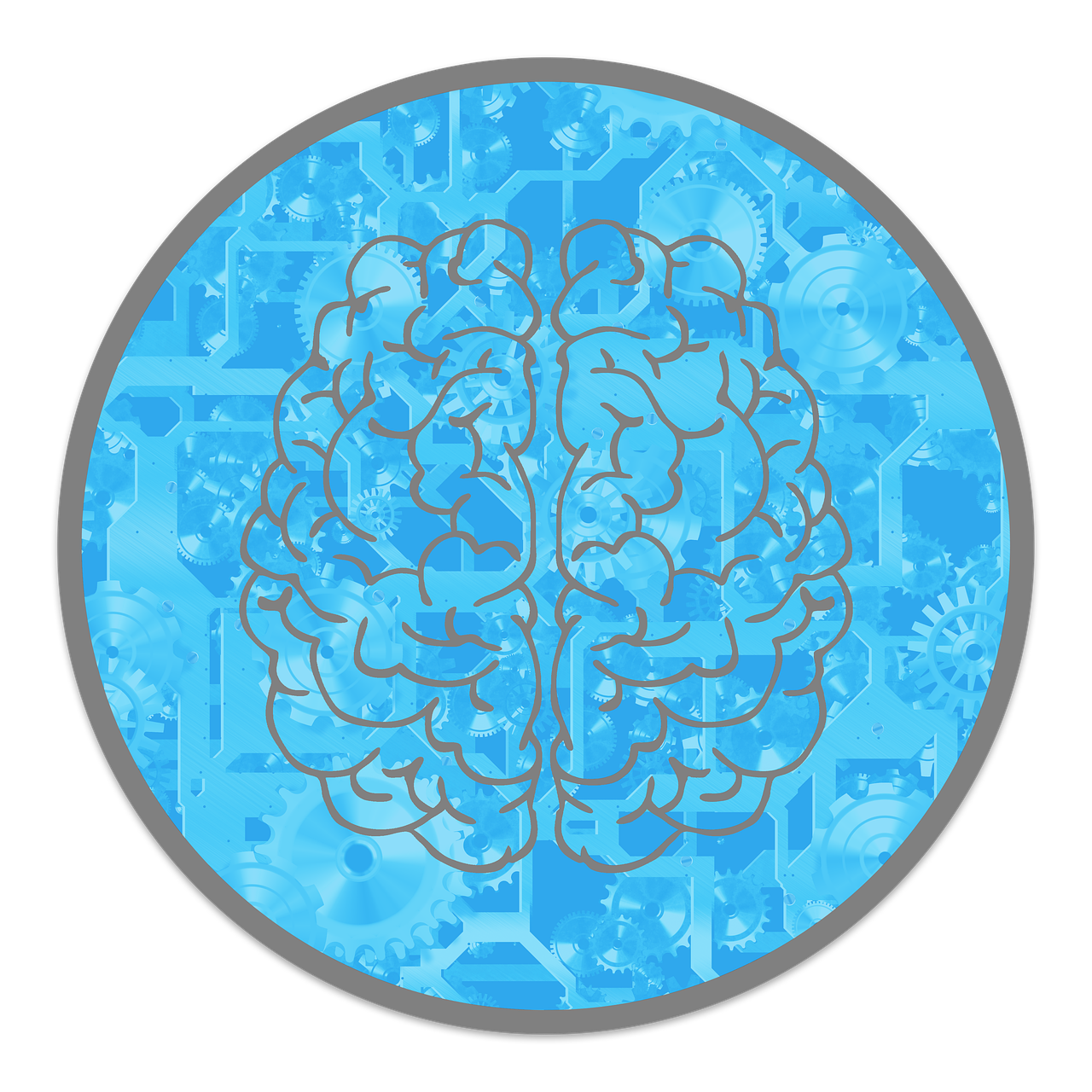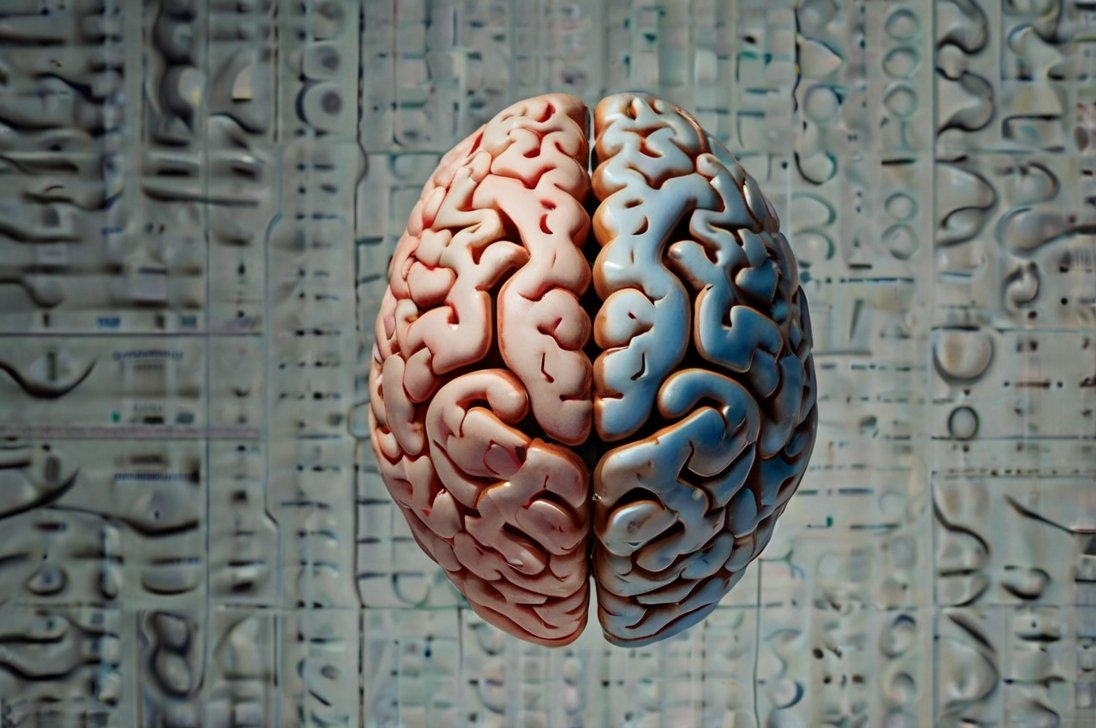
The concept of brain hemisphere dominance suggests that one side of the brain is more dominant than the other, influencing your cognitive abilities, personality, and even learning style.
This theory has become a popular way to explain why some people are more logical and analytical, while others are more creative and intuitive.
But is it really that simple?
The truth is more nuanced, and while brain hemispheres do have specialized functions, the idea of being “left-brained” or “right-brained” is an oversimplification.
The Myth of Left-Brain vs. Right-Brain Dominance
The idea that people are either left-brain or right-brain dominant originates from the 1960s, following research by Roger W. Sperry, who studied split-brain patients.
His work won him a Nobel Prize, and the media quickly latched onto the notion of two distinct brain hemispheres, each responsible for different aspects of cognition.
The left brain was thought to be analytical, logical, and detail-oriented, while the right brain was considered creative, intuitive, and holistic.
However, recent research suggests that the brain is far more integrated than this binary view suggests.
A study published in PLOS ONE in 2013 analyzed over 1,000 brain scans and found no evidence that people are solely left-brain or right-brain dominant.

Characteristics of Left-Brain and Right-Brain Dominance
Despite the myth, there are still some general characteristics that have been traditionally associated with each hemisphere.
These traits can be useful for understanding how we process information and approach problems, even though they are not absolute.
Left-brain dominant characteristics
- Logical thinking: Left-brain dominant individuals are often more logical and analytical, excelling in subjects like math and science.
- Language skills: This hemisphere is typically associated with language processing, making these individuals strong in reading, writing, and speaking.
- Detail-oriented: They tend to focus on the details rather than the big picture.
- Organized: Left-brain thinkers are usually well-organized and prefer structured environments.
Right-brain dominant characteristics
- Creative thinking: Right-brain dominant people are often more creative and artistic, excelling in the arts and humanities.
- Emotional intelligence: This side is associated with emotions and intuition, making these individuals empathetic and understanding.
- Big picture focus: They are more likely to think holistically, focusing on the overall concept rather than specific details.
- Adaptable: Right-brain thinkers may be more spontaneous and adaptable to new situations.
Practical Applications
Understanding brain hemisphere dominance can offer insights into how you learn best and how you can improve your cognitive abilities.
Study tips for left-brain dominant learners
If you find that you’re more of a left-brain thinker—meaning you lean towards logic, organization, and analytical skills—here are some study tips that might work well for you:
Structured study plans
Make a clear, detailed plan for your study sessions.
Set specific goals and deadlines to keep yourself on track.
Break your study material into smaller, more manageable tasks, so you don’t feel overwhelmed and can focus on one thing at a time.
Logical note-taking
When you take notes, use bullet points and outlines to organize the information.
This method helps you see the structure and flow of the material, making it easier to understand and recall.
Analytical exercises
Engage in activities that require problem-solving and critical thinking.
This could include working on puzzles, solving math problems, or playing strategic games.
These exercises can sharpen your analytical skills and reinforce your learning.

Study Tips for Right-Brain Dominant Learners
If you’re more of a right-brain thinker, you likely thrive with creative and visual approaches to learning.
Here are some strategies that might suit you:
Visual aids
Use diagrams, charts, and other visual tools to help you study.
Seeing information represented visually can make complex ideas easier to understand and remember.
Creative projects
Engage in projects that let you express your ideas creatively.
This could include making mind maps, storyboards, or other non-linear presentations.
These creative methods can help you organize and grasp concepts in a way that feels natural to you.
Holistic learning
Start by understanding the overall concept or big picture before focusing on the smaller details.
Try to relate what you’re learning to real-life situations.
This approach can help you see how different pieces fit together and make the information more meaningful.
Exercises for Both Hemispheres
Engaging both hemispheres of the brain can lead to more balanced cognitive abilities.
Here are some exercises that can help you develop both sides of your brain.
Left Brain Exercises
Math and logic puzzles
Try working on puzzles that challenge your logical thinking.
Sudoku and crosswords are great examples because they require you to think critically and solve problems.
Coding exercises can also be very stimulating for your logical and analytical skills.
Language learning
Learning a new language or diving into complex grammar can be a great workout for your left brain.
It involves understanding rules, patterns, and structures, which aligns well with the logical and detail-oriented nature of left-brain thinking.
Sequencing activities
Engage in tasks that involve following a sequence of steps.
This could be anything from following a recipe to building a model.
These activities require you to process information in a logical order, which helps strengthen your left-brain abilities.

Right Brain Exercises
Artistic activities
Spend time drawing, painting, or doing any form of creative art.
These activities stimulate the right side of your brain, which is responsible for creative and visual thinking.
Whether you’re creating something abstract or realistic, artistic expression can help you tap into your imaginative side.
Music
Listen to music or learn to play an instrument.
Music has a powerful impact on the right brain, engaging your creative and emotional centers.
Whether you’re enjoying a favorite song or experimenting with new melodies, music can enhance your emotional and creative abilities.
Imaginative visualization
Practice techniques that involve visualizing scenarios or places.
For example, you might imagine yourself in a peaceful setting or visualize achieving your goals.
These exercises help you use your imagination and can strengthen your right brain by enhancing your ability to think creatively and emotionally.
Balanced Brain Exercises
Mindfulness meditation
Practicing mindfulness meditation helps balance both sides of the brain by promoting a state of relaxed awareness.
During meditation, you focus on the present moment, which encourages both the logical, analytical side and the creative, emotional side of your brain to work in harmony.
Physical exercise
Activities like yoga are great for balancing brain function.
Yoga requires coordination, focus, and a mind-body connection, which engages both the left and right hemispheres of the brain.
This helps improve overall brain function and keeps both sides working together effectively.
Problem-solving
Take on tasks that require both logical reasoning and creative thinking.
For example, designing a project or planning an event involves figuring out practical details while also thinking creatively about how to make it successful.
This type of problem-solving engages both hemispheres of the brain, helping to strengthen and balance them.

Conclusion
While the idea of being strictly left-brained or right-brained has been debunked, understanding the characteristics traditionally associated with each hemisphere can still provide valuable insights.
By recognizing your natural tendencies, you can tailor your learning strategies to suit your cognitive strengths.
Additionally, exercises that engage both hemispheres can help create a more balanced and adaptable brain, enhancing your ability to think critically and creatively.



